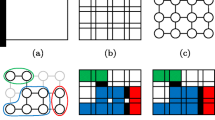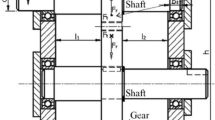Abstract
Some important classes of optimization problems originating from the optimal design of semiconductor memories such as SRAM, aiming at boosting the yield rate, are studied. New optimization methods for the classes based on a symbolic algorithm called quantifier elimination, combined with numerical computation, are proposed. The total efficiency of the design process is improved by reducing the number of numerical yield-rate evaluations. In addition, useful information such as the explicit relations among design variables, objective functions, and the yield rate, is provided.
Similar content being viewed by others
References
Anai H., Hara S., Kanno M., Yokoyama K.: Parametric polynomial spectral factorization using the sum of roots and its application to a control design problem. J. Symb. Comput. 44(7), 703–725 (2009)
Davenport J.H., Heintz J.: Real quantifier elimination is doubly exponential. J. Symb. Comput. 5(1/2), 29–35 (1988)
Deb, K.: Multi-objective optimization using evolutionary algorithms. Wiley-interscience series in systems and optimization. John Wiley & Sons, Chichester (2001)
Dolzmann A., Sturm T.: REDLOG computer algebra meets computer logic. ACM SIGSAM Bull. 31, 2–9 (1996)
Eberhart, R., Kennedy, J.: A new optimizer using particle swarm theory. In: Proceedings of the Sixth International Symposium on Micro Machine and Human Science, pp. 39–43. Nagoya, Japan (1995)
Eiben A.E., Smith J.E.: Introduction to evolutionary computing. Springer, Berlin (2003)
Goldberg D.E.: Genetic algorithms in search optimization and machine learning. Addison-Wesley, Boston (1989)
Haimes, Y.Y.: Integrated system identification and optimization. In: Control and Dynamic Systems: Advances in Theory and Application, vol. 10, pp. 435–518. Academic Press, New York (1973)
Miettinen K.: Nonlinear multiobjective optimization. Kluwer Academic Publishers, Boston (1999)
Sastry, K.: Single and multiobjective genetic algorithm toolbox in c++. http://www.kumarasastry.com/2007/06/11/single-and-multiobjective-genetic-algorithm-toolbox-in-c/
Sturm, T.: New domains for applied quantifier elimination. In: Ganzha, V.G., Mayr, E.W., Vorozhtsov, E.V. (eds.) CASC, Lecture Notes in Computer Science, vol. 4194, pp. 295–301. Springer, Berlin (2006)
Weispfenning V.: The complexity of linear problems in fields. J. Symb. Comput. 5, 3–27 (1988)
Yanami H.: Multi-objective design based on symbolic computation and its application to hard disk slider design. J. Math. Ind. 1, 149–156 (2009)
Yanami H., Anai H.: The maple package SyNRAC and its application to robust control design. Future Gener. Comput. Syst. 23(5), 721–726 (2007)
Zadeh L.: Optimality and non-scalar-valued performance criteria. IEEE Trans. Autom. Contr. 8, 59–60 (1963)
Author information
Authors and Affiliations
Corresponding author
Rights and permissions
About this article
Cite this article
Iwane, H., Yanami, H. & Anai, H. A Symbolic-Numeric Approach to Multi-Objective Optimization in Manufacturing Design. Math.Comput.Sci. 5, 315–334 (2011). https://doi.org/10.1007/s11786-011-0097-y
Received:
Revised:
Accepted:
Published:
Issue Date:
DOI: https://doi.org/10.1007/s11786-011-0097-y
Keywords
- SRAM
- Parametric optimization
- Multi-objective optimization
- Quantifier elimination
- Symbolic-numeric computation




